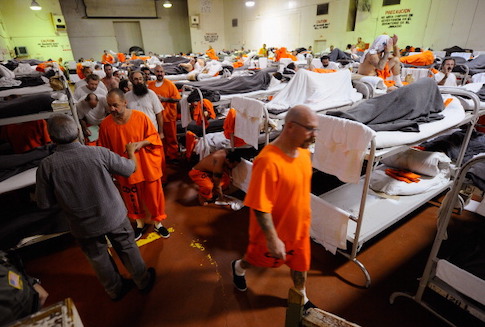There are millions of people in America today with a criminal record, yet government statistics shed almost no light on their lives and experiences, an expert demographer argued in a Congressional hearing Wednesday.
Dr. Nicholas Eberstadt, a scholar at the American Enterprise Institute, testified before a hearing of Congress's Joint Economic Committee on "the economic impacts of the 2020 Census and business uses of federal data." He is the author of the monograph Men Without Work, in which he explores the steady shift of working-age men out of the labor force over the past half-century.
In this and other work, Eberstadt largely depends on federal survey data to paint an accurate and comprehensive picture of these men and their lives. However, in his view these data are woefully inadequate to explaining the rise of non-working men.
"Our failure to cope more expeditiously with this problem, I submit, is in part due to our failure to understand it—a failure, in turn, directly related to the inadequacy of our statistical services to illuminate this problem's important dimensions," Eberstadt said.
There is one population about whom, he said, our government statistical systems can say very little in particular: people who have, whether through arrest or incarceration, been involved with the criminal justice system.
By the most comprehensive estimate, there are about 2.3 million people currently detained in America's prisons, jails, and other detention facilities. The majority of these individuals have been tried and convicted (although usually through plea bargaining); roughly a quarter, however, are indefinitely detained in jails, awaiting trial and unable to afford bail.
What is more, because America's prisons grew steadily for more than three decades, millions of additional Americans have an arrest record or history of incarceration. 110 million Americans had an arrest record as of 2016, while one analysis estimated that roughly twenty million American adults (and 15 percent of adult black men) had been to prison. These individuals are substantially more at risk of unemployment and homelessness, realities which can eventually push them back into the criminal justice system.
As Eberstadt and others have noted, the rise of mass incarceration almost certainly explains some proportion of the decline in prime-age male labor force participation. Yet it is startlingly hard to say how much, for the reason that Eberstadt sought to highlight Wednesday: We simply do not have good, comprehensive data on America's former felons.
"What do we know about this huge contingent of people?" Eberstadt asked. "Almost nothing. Age, sex, ethnicity, living arrangement, family situation, income, educational profile, health status, and all the rest of the data the U.S. federal statistical system collects for our national population cannot be cross referenced by arrest status, at least thus far."
Data on the formerly incarcerated is just part of a much broader lack in America's criminal justice data system. Most collection of data on currently incarcerated individuals is overseen by the Bureau of Justice Statistics (BJS). While it is able to collect data about federal prisons, thanks to the U.S. Sentencing Commission, the BJS often receives only limited information from states, meaning that national statistics on who is actually in prison are urgently lacking.
Certain data about the criminal justice system are completely absent. For example, misdemeanors (primarily traffic violations) account for three quarters of all criminal cases filed annually in the United States, yet there is essentially no comprehensive data about trends in who is arrested for which misdemeanor when and where. Further, because of the infrequency with which numbers can be collected by the BJS, figures on jail and prison populations can often fail to capture individuals detained for periods of less than a year, thereby omitting vital information about the flow.
In other words: from arrest to conviction to imprisonment to release and reentry, there exist only limited and hodge-podge statistics to capture who is going where and how it affects them. Most people agree that there are problems with America's incarceration system at present. But the numbers needed to address those problems are often fundamentally and obviously lacking.
A lack of data transparency is also a threat to public accountability: for example, lack of information on jails in California constrains best guesses at how many black people and marijuana offenders Sen. Kamala Harris (D., Calif.) locked up during her term as State's Attorney.
Eberstadt on Wednesday called for an end to this "statistical darkness." The addition of one or two questions on criminal justice involvement to the American Community Survey—the annual version of the census administered to a statistically representative subset of the population—would throw light on the experience of the formerly incarcerated. Before that could be implemented, other changes could be made, for example by making it easier to link BJS data to the annual Current Population Survey, which tracks economic statistics for the nation.
"Irrespective of future policing and judicial policies, the population of arrested Americans and Americans with a felony is on track to continue to grow for many years to come—quite possibly for decades to come. For obvious reasons, approaches to reentry and rehabilitation today remain mainly anecdotal. It is past time to begin resting those arguments on facts," he concluded.
